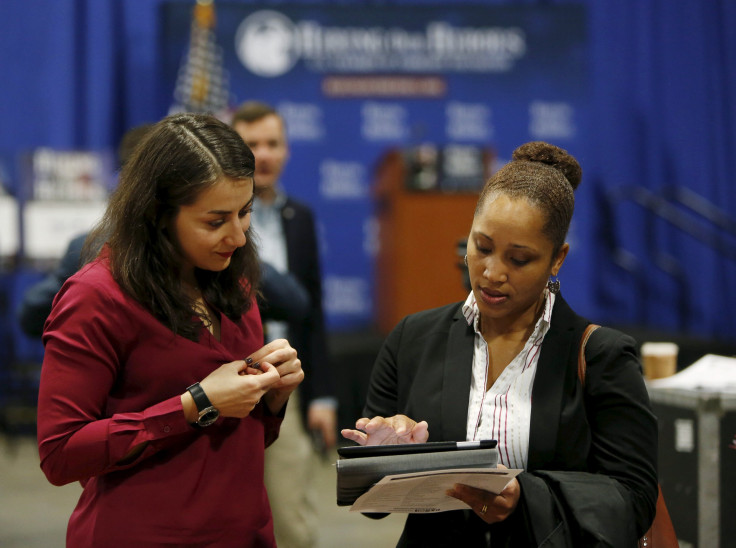US Payrolls Seen Rebounding In June In Boost To Economy

U.S. job growth likely rebounded in June as striking Verizon employees returned to work and wages probably rose steadily, more evidence the economy has regained speed after a first-quarter lull.
The U.S. Labor Department's jobs tally due on Friday is likely to show nonfarm payrolls increased by 175,000 jobs last month after a meager 38,000 gain in May, according to a Reuters survey of economists. The unemployment rate is forecast rising to 4.8 percent from an 8-1/2-year low of 4.7 percent a month earlier as some job seekers returned to the labor market.
The signs of economic strength would be welcomed by the Federal Reserve. Nonetheless, economists say the report will likely have little impact on the near-term interest rate outlook given the U.S. central bank's desire to wait on more data to assess the economic impact of Britain's stunning vote last month to leave the European Union.
"Will a strong job number and solid GDP growth matter to the Fed? Probably not. The (Fed) members are like pinballs, bouncing from one temporary crisis to the next," said Joel Naroff, chief economist at Naroff Economic Advisors in Holland, Pennsylvania.
The so-called Brexit referendum on June 23 roiled financial markets, raising fears that sustained volatility might negatively impact companies' hiring and investment decisions. Economists have also warned that slower growth in Europe and a stronger dollar could weigh on the U.S. economy.
Minutes of the Fed's June 14-15 meeting published on Wednesday showed that officials "agreed that ... it was prudent to wait for additional data on the consequences of the UK vote."
The Fed raised rates in December for the first time in nearly a decade, but markets now expect no further increase this year.
May's payroll gain - the smallest since September 2010 - in part reflected the loss of 35,100 Verizon workers, who were excluded from the count while on a month-long strike. With their return, information industry employment likely snapped back.
Job gains are also expected in the construction, retail, and leisure and hospitality sectors. Economists say unseasonably warm weather at the start of the year had pulled forward hiring in these areas, leading to payback in the last two months.
Construction is also forecast to have added jobs after two months of declines, but manufacturing employment was likely unchanged and mining probably maintained its downward trend.
SLOWING MOMENTUM
Even with June's anticipated jobs bounce back, forward momentum in the labor market has slowed. Job gains averaged 282,000 per month in the fourth quarter, but employment has increased by an average of only 150,000 jobs per month over first five months of this year.
Economists say the deceleration is normal given the relatively advanced age of the economy's recovery from the 2007-09 recession, with the labor market now near full employment.
"The labor market is slowing because the business cycle is slowing. There is less slack to absorb," said Thomas Costerg, senior U.S. economist at Standard Chartered Bank in New York.
Stronger payroll gains in June would add to data on consumer spending and housing in suggesting that economic growth accelerated from the first-quarter's anemic 1.1 percent annualized rate. The Atlanta Federal Reserve Bank is currently forecasting the economy growing at a 2.4 percent pace in the second quarter.
Tightening labor market conditions are expected to start putting upward pressure on wages. Average hourly earnings are forecast increasing 0.2 percent in June after a similar gain in May. The year-on-year gain in earnings could rise as high as 2.7 percent after advancing 2.5 percent in May.
The labor force participation rate, or the share of working-age Americans who are employed or at least looking for a job, is expected to rise after falling 0.2 percentage point to 62.6 percent in May. That drop unwound about two-thirds of the increase seen between last September and March this year.
"Looking through the volatility ... participation is stabilizing after several years of declines, and employment growth remains strong enough to gradually reduce remaining spare capacity in the labor market," said Zach Pandl an economist at Goldman Sachs in New York.
© Copyright Thomson Reuters 2024. All rights reserved.





















